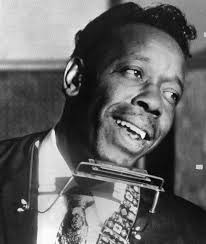Slim Harpo may not be a household name like Muddy Waters or B.B. King, but his swampy, laid-back blues sound has left a lasting mark on American music. With a harmonica in hand and a smooth vocal style, Harpo bridged rural Louisiana blues with mainstream rock and roll. Here are five fascinating curiosities that shine a light on this underrated bluesman.
1. His Stage Name Was Inspired by His Harmonica
Slim Harpo was born James Isaac Moore in Lobdell, Louisiana, in 1924. When he began performing professionally in the 1950s, he first used the name “Harmonica Slim.” However, to avoid confusion with another musician using that name, he switched to “Slim Harpo.” The name “Harpo” is simply “harp” spelled with an “o”—a slang term for the harmonica. It was a fitting tribute to the instrument that defined his sound.
2. He Was a Favorite of British Rock Bands
Despite his humble beginnings in the American South, Slim Harpo’s music had a powerful impact overseas. His songs were hugely influential in the UK, especially among British Invasion bands. The Rolling Stones, The Kinks, and The Yardbirds all covered Harpo’s material. “I’m a King Bee,” his 1957 debut single, was famously recorded by the Rolling Stones on their first album. Harpo’s rhythmic grooves and simple, catchy riffs were a natural fit for early rock ‘n’ roll.
3. He Balanced Music With a Day Job
Unlike many full-time musicians, Slim Harpo maintained a double life. He continued to work in construction and even ran his own trucking business while recording music and touring. Though he became a successful blues artist with hits like “Rainin’ in My Heart” and “Baby Scratch My Back,” Harpo never fully relied on music for income. His pragmatic approach helped him stay grounded throughout his career.
4. He Helped Define “Swamp Blues”
Slim Harpo was one of the key figures in a genre known as swamp blues—a style rooted in Louisiana’s steamy bayous. Unlike the more urban Chicago blues sound, swamp blues is slower, moodier, and often features a relaxed rhythm that evokes the feeling of the Deep South. Working with producer J.D. Miller in Crowley, Louisiana, Harpo created recordings that captured this distinctive sound, blending blues with elements of country and R&B.
5. His Life Was Tragically Cut Short
Just as Slim Harpo’s music was reaching a wider audience, his life came to an untimely end. In January 1970, he died suddenly of a heart attack at the age of 46. He had been scheduled to tour Europe for the first time, a trip that might have significantly boosted his international fame. Though his life was short, Slim Harpo left behind a catalog of songs that continue to inspire musicians across genres.
Final Thoughts
Slim Harpo’s unique sound and understated charisma made him one of the most original voices in post-war blues. His music bridged racial and geographic divides, resonating with fans from Louisiana to London. Whether you’re a longtime blues fan or new to the genre, exploring Harpo’s recordings is a journey worth taking—one swampy riff at a time.


Comments are closed